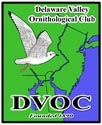Green Birding
It’s pretty cool what has been done in the name of bird conservation lately.
While green birding has been around, it was the Big Bird Year (BIGBY) that has really put the concept out there in an inspiring way. The Big Bird Year was an incredible cross-country cycling trip for 10th grade birder, Malkolm Christie and his parents, that started in Alaska and ended some 12,000 miles later in Big Bend, Texas. At the end of the year it took them to complete this journey, Malkolm Christie had spotted 548 bird species and raised $20,000 some dollars for bird conservation. (Donations are still being accepted). But even as the Big Bird Year has come to its end, it’s a tradition in the making, I think, with greater journeys to come.
The idea behind green birding is to try and see how many bird species you can but only traveling to birding spots using fossil fuel-free transportation, or at least, more environmentally friendly means.
Many such challenges get sponsored and have raised money for bird conservation efforts. Even deciding on not partaking in a fossil-fueled trip to see a rare bird can be turned into a way to make a gift to conservation. Check out the June 18th post entitled “Sedge Wren” on Mike’s Bird and Digiscope Blog.
Meanwhile, before I even get to my car I’ve been having some close encounters with birds whether I want to or not. A family of Mockingbirds have made a nest in a Juniper right at the top of the steps to the parking area where I live. Even when I use the other stairs so as to avoid walking close to their nest, I’ve still felt the rush of air and the brush of feathers on the side of my head as I am dive-bombed by the Mockingbirds parents. I have been keeping a thick towel in the car for head protection should I need it.
You can see the entrance hole to the nest, where the branches have parted some, in the top part of the yellow-green shrub.
At first, the attacks were limited to agitated vocalizations and I thought I had satisfied the parents by using the other stairway. But when the eggs hatched and both parents were non-stop bringing food to the babies the air attacks got worse. Hence, the towel.
And I had thought Brussel sprouts were bad.
Meanwhile, I now subscribe to Cornell’s Birds of North America online and have easy access to more information on Mockingbirds and how long I can expect to be under threat of dive bombing. What sold me on this resource as opposed to a field guide or wikipedia, is that the material is from the most current ornithology articles written by specialists of whatever species is searched.
I now know that it was most likely the male that was attacking me and that Mockingbirds recognize those individuals who are repeated intruders, and concentrate their attacks on those lucky folks. Actually, I find this interesting and wonder if using a different colored towel would make the birds think I’m someone else. Much as I can appreciate their protectiveness, I do have to get into my own nest and there are only 2 pathways that go from my car to my door.
Although for some reason, in the last couple of days the parents aren’t right there waiting for me when I get out of my car. One of them may sit and make some aggressive raspy sounds from the trees, but I haven’t been attacked all weekend. So I guess a towel switch or facial reconstruction won’t be needed.
I think, I hope, by the end of this week there should be some fledglings taking refuge in the shrubbery. There is something absolutely precious about young birds that haven’t quite learned to fly but hop around and perch on low branches. According to Cornell’s Bird of North America (BNA), the youngsters will hang out as fledglings for about another week before flying off.
Also, BNA tells me that while Mockingbirds often build more than one nest,in a breeding season (sometimes up to 6) they do not reuse the same one. So, we’ll see if next year I’m running a 3-week gauntlet with a towel and sunglasses.
Early digiscope image of a Mockingbird from last March in Peace Valley, PA








